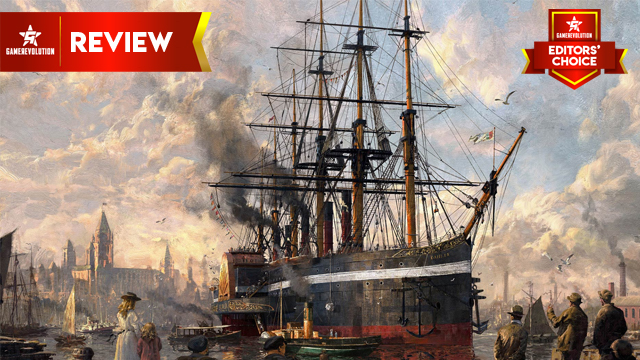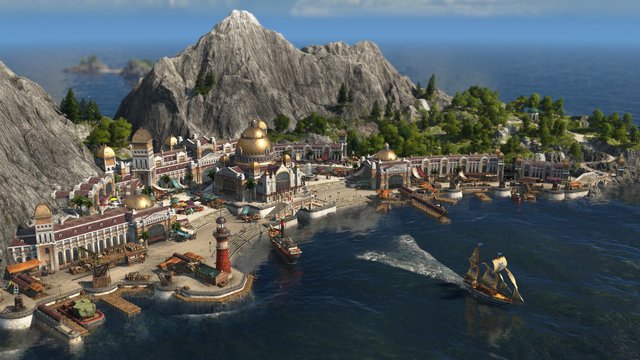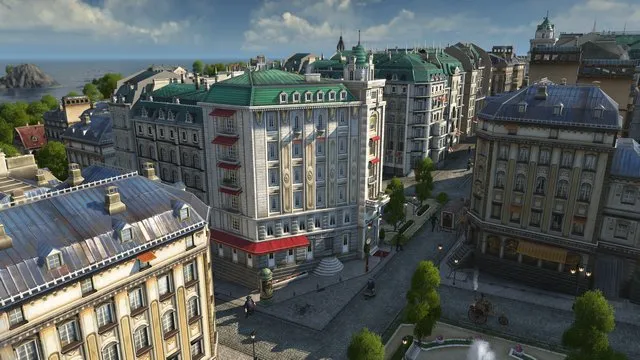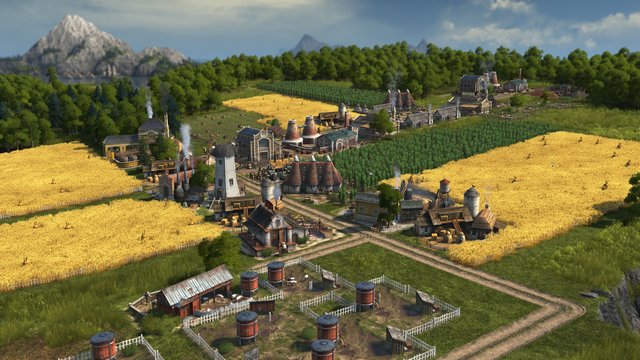Anno 1800 is the latest in Ubisoft’s lauded city-building real-time-strategy series. Anno is known for mixing the two genres into a fast-paced, satisfying dynamic that has you wrestling between the desire to build a perfect city and ensure the happiness of its citizens and the necessity to have a constant stream of resources and money flowing into your coffers.
This time the series is tacking the Industrial Revolution while also implementing mechanics that simulate the colonization of the New World. The result is game that’s absolutely brimming with systems that will have you scrambling to solve crises amongst multiple settlements while also planning for the future of your newly found economic empire.
Anno 1800 Review | Citizens of the world unite
The Victorian era was a time of significant change in the world. Steam power began its proliferation, and the general labor force of most countries was ending its dependence on slaves, and the need for skilled labor was rising exponentially.
At the same time, colonization was at a fever pitch, and the New World was changing just as dramatically as the European empires staked their claims amongst the lands of the Americas. Anno 1800 simulates all this by splitting play between two different maps.
In the Old World, the tech tree is more complicated. As your empire prospers, your citizens do as well. While your population will start with simple farmers, as your city grows you’ll need to level them up into Workers who ply their skills in the newly opened factories, Workers will level up into Artisans, whom in turn can become Engineers. Finally, the top tier of your population will be Investors.
Each of these classes of citizens comes with its own tech tree and needs. Farmers only need clothes, a market, and fish to be happy. Once a house of citizen’s happiness is maxed out you can level them up to the next tier, but with that comes more responsibility. When Farmers become Workers, they still need clothes and fish, but their increased stature also leads them to demand sausages, bread, soap, and education. Additionally, when Luxury Needs like pubs, Schnapps, and beer become available, citizens will want those as well.
Needs apply retroactively as well. So, once pubs become available, both Farmers and Workers count them as a Luxury Need. This keeps things interesting as your citizen’s wants and needs evolve with the state of your settlement. You can never just get them to max happiness and forget about them. You have to take time out to make sure that they’re still happy or you may end up with a riot on your hands when you least expect it.
Anno 1800 Review | Making demands
Each tier of citizens introduces new tech which will become instrumental to furthering your settlement. At first, all you need is lumber for houses and the few resources it takes to make Farmers happy. Once Workers come into play, though, you’ll find yourself making multi-stage products.
Beer, for example, requires a supply of both wheat and hops to brew. This is where Anno 1800‘s complexity, and its charm, start coming into play. Each island has a fertility stat that details which crops can be grown there. So, if your Workers want a beer, there’s a chance your starting island may be fertile for wheat but not hops. This means you have to expand to an unclaimed island that allows you to grow them, then transport the hops back to your first island via ship.
When you claim a new island, a process the game neglects to inform you how to do; you basically start over on the tech tree. With a population of zero when you settle an island, you have to start with a Farmer population, then move then to Workers just like you did on your first island. This means that each of your towns will be at a different stage of development until the very late game.
It’s tenuous to balance making sure that your various industries are receiving the raw materials they need to manufacture end products. It’s easy to sway one way or the other if you’re not careful. You may open a new brewery only to find you no longer are producing enough wheat to make bread. Alternatively, being overzealous in constructing logging camps and sawmills might mean you’re always at the limit for storage and employing farmers that could be used better elsewhere.
Trading makes this process even more complex. You can trade your excess material to the other moguls in the game, or also buy materials you need to make your own goods. Striking a balance to all this in your first settlement isn’t too tricky, but by the time you reach the end game you’ll have multiple towns in the Old World and colonies in the New World, all carrying goods between each other as well as trading with rivals.
This tangled web of supply and demands will have you always on your toes and makes Anno 1800 one of the most attention-demanding RTS city-builders on the market.
Anno 1800 Review | A whole new world
The second map, the New World only adds to the fun. Once you’ve got your first settlement established and growing you’ll eventually get a prompt that asks if you want to take an expedition. Going on this expedition is your way of opening the New World map.
The New World’s tech tree is a bit more limited than that of the Old World. There are only two tiers of citizens there. Jornaleros are your farmers and basic workers. Jornaleros can level up into Obreros who are the workers and tradesmen of your colony.
New World citizens have needs just like those of the Old World, but they’ll be fulfilled by different materials. There is an entirely different set of crops, buildings, and other materials that can be harvested and processed in the New World. In turn, these can be transported to the Old World and sold for a profit, or used to fulfill citizen needs.
For example, one of the Investor tier citizen’s basic needs is cigars. These can only be produced in the New World. So, to bring your Old World settlements to their max levels, you have to invest time in New World colonies.
Speaking of colonies, I’m sure someone is expecting some sort of commentary on colonialism and the slave trade. Well, there’s not any here. That’s a good thing. We all know those things weren’t proud moments in European history, but fortunately, Anno 1800 takes place in an alternate universe where I’m not even sure Europe exists.
Anno 1800 Review | By the numbers
Unfortunately, it’s hard to keep all the numbers that represent supply and demand straight. The UI, which will be expanded in an upcoming update according to Ubisoft, doesn’t do a great job of showing you exactly what’s coming in and what’s going out.
You might need cigars for Investors, but it’s challenging to get a solid handle on how many cigars each investor needs over x period of time. Materials aren’t consumed in whole units, but that’s the only way you get to see them in-game. One cigar can supply multiple households of Investors, but there’s no way of seeing that.
Statistics are all very opaque in the current UI, and because of this, you end up riding the razor’s edge of overproduction vs. underproduction. It makes it hard to plan ahead, and especially in the mid-game when a ton of materials start being introduced at once, it’s not hard to end up playing in a much more reactionary manner than I’d like to. Anno 1800 would really benefit from detailed reports and forecasts, and that’s something that I’d like to see in the future.
Anno 1800 Review | Best Anno to date
Anno 1800 is one of the most fun city-builders I’ve played in a long time. The construction of your city isn’t as complex as Cities: Skylines, but the complex supply and demand mechanics make Anno more action-packed than many combat oriented RTS games. You’ll constantly be juggling trade routes and worker types, and it all adds up to an incredibly rewarding experience.
The only downside to Anno 1800 right now is the lackluster UI. However, if that gets the care it deserves, and some of the abstraction gets removed, then this game will take its place as one of the best city-builders of all time.
-
Controlling multiple settlements is challenging and rewarding.
-
Beautiful graphics and art design.
-
Easy to pick up, but hard to master.
-
Complex supply and demand mechanics keep you on your toes from early to late game.
-
UI doesn't always give you the most pertinent information and consumption and production numbers can get too abstract.















